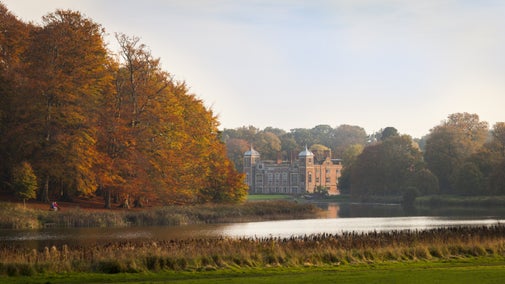
Donate
Everyone needs nature, now more than ever. Donate today and you could help people and nature to thrive at the places we care for.

Discover some of the work that our staff and volunteers carry out to preserve Flatford and the Dedham Vale for visitors now and for generations to come. Learn about the different types of land we look after and how we grow delicious produce in a once-hidden kitchen garden.
The Dedham Vale – also known as Constable Country – forms part of the lower valley of the River Stour on the Essex and Suffolk border. No formal boundary exists for this small area but it can be described as the valley between Stratford St Mary in the west and Flatford in the east.
The National Trust owns and cares for approximately 9,000 hectares (22,230 acres) of land within the Dedham Vale National Landscape and 234.5 hectares of the Dedham Vale area itself (2.34 per cent of the National Landscape).
Most of this land is farmland, 203 hectares of which is grassland, while 21 hectares is cropped. There is also 6.5 hectares of wood pasture, 3 hectares of woodland and 1 hectare of scrub.
The area is also home to several vernacular buildings, most notably in the hamlet at Flatford. Here, Willy Lott’s House, Flatford Mill, Valley Farm, Bridge Cottage and the Dry Dock were acquired by the National Trust in 1946.
A further 1,691 hectares (4,179 acres, or 18.79 per cent of the National Landscape) is private estate land subject to restrictive covenants in favour of the National Trust.
We work in the Dedham Vale to ensure that traditional mixed farming can continue, as well as preserving key aspects of the working landscape.
We also aim to improve public understanding of Constable’s significance and the importance of balancing the relative fragility of this landscape with a sustainable level of access for residents and visitors.

When the National Trust leased Valley Farm to The Field Study Council, we discovered that a completely overgrown piece of ground behind the farm building had clearly once been a kitchen garden. In 2010, following the discovery, we were awarded a £1,000 grant to go towards restoring the garden as part of National Trust's Eat Into Green Living initiative.
National Trust volunteers undertook the restoration and uncovered some exciting features, including original brick paths and box hedges.
Since the garden was restored, volunteer gardeners have worked to preserve and develop it. We try to maintain the garden as traditionally as possible to respect its heritage. Four teams of gardeners work on Monday, Tuesday, Wednesday and Friday mornings.
Using organic methods, we grow a huge selection of fruit and vegetables, including several different varieties of beans, potatoes, onions, leeks, courgettes, squashes, herbs, and salad crops such as lettuce, tomatoes and cucumbers. We also have a soft fruit garden where we grow all manner of berries including raspberries, strawberries, loganberries and gooseberries.
Additionally, we grow flowers such as sweet peas, dahlias and an interesting variety of poppies. We collect seeds from some of the flowers to sell from our market barrow outside Bridge Cottage.
Much of the produce we grow is used in the tea-room's freshly prepared dishes. Produce that is surplus to the tea-room's requirements, or that isn’t needed in any of their recipes, goes on sale to the public on the barrow.
With your ongoing support, we're able to continue our vital conservation work. Thank you for helping to protect these special places.

Everyone needs nature, now more than ever. Donate today and you could help people and nature to thrive at the places we care for.
Flatford is home to a number of unique buildings which all have individual histories. Read on to discover more about the history of this special place.

There is plenty for all to enjoy on a visit to Flatford. Take a self-guided trail or join a tour and discover the locations of major paintings by John Constable.

We believe that nature, beauty and history are for everyone. That’s why we’re supporting wildlife, protecting historic sites and more. Find out about our work.

Read about our strategy, which focuses on restoring nature, ending unequal access and inspiring more people.
